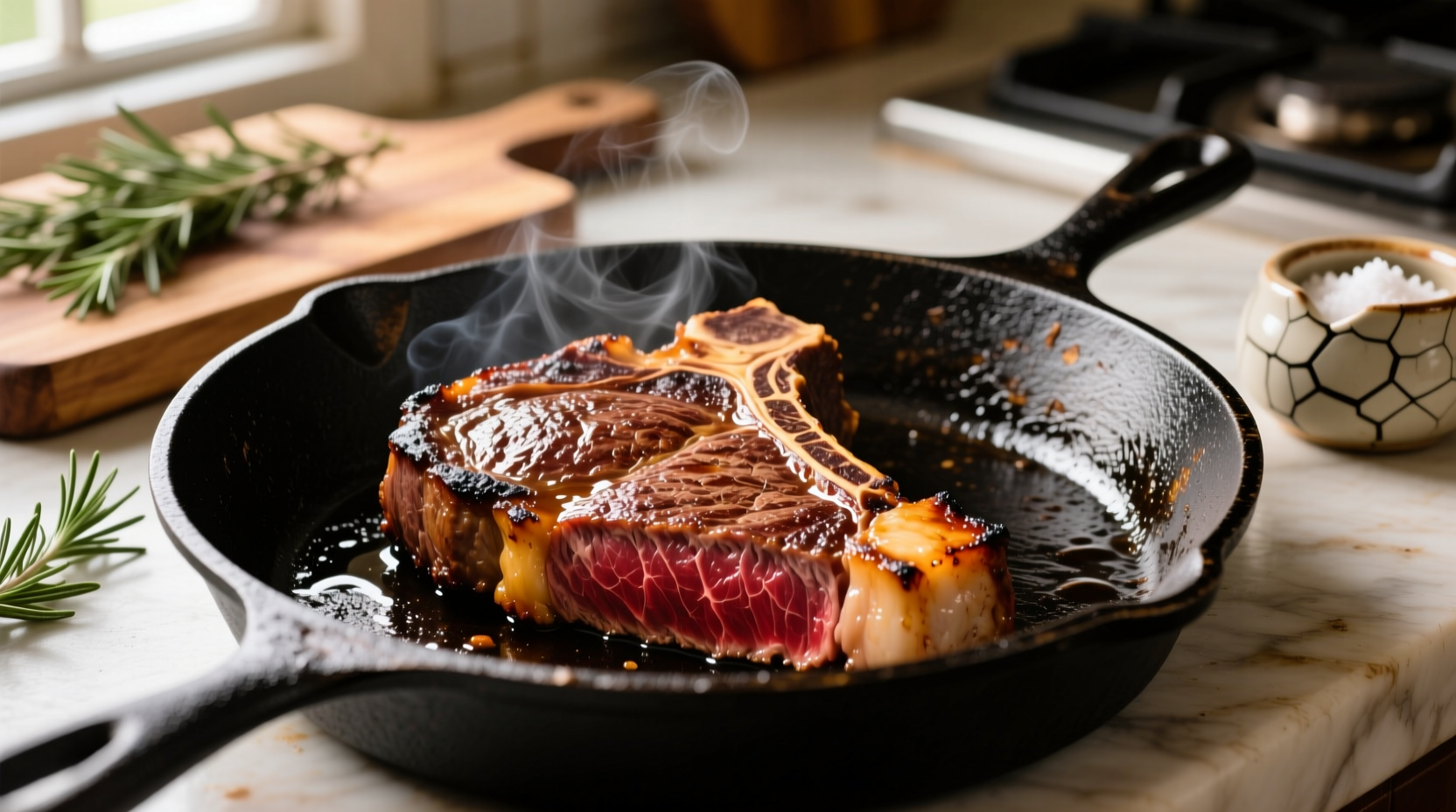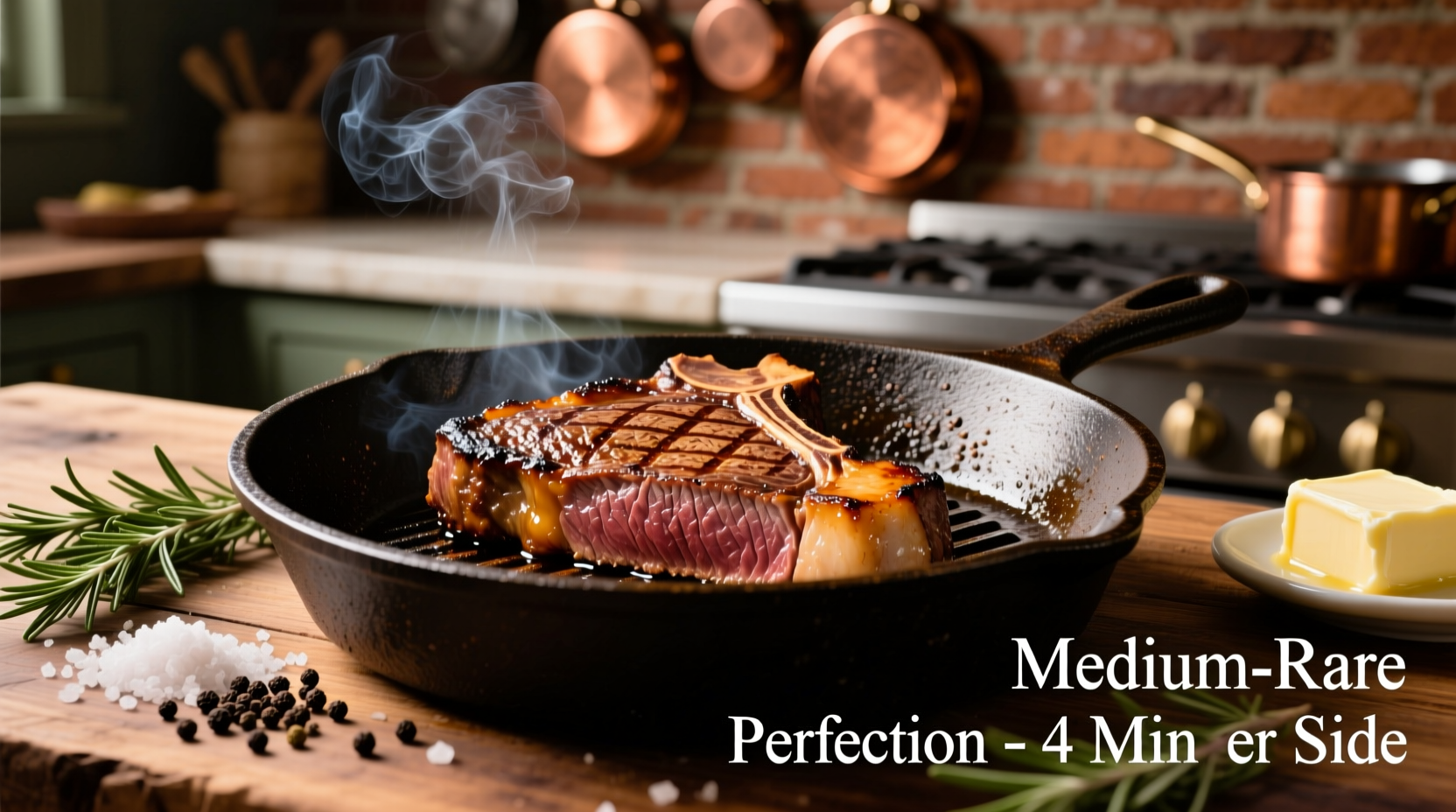The perfect cast iron steak requires a dry, room-temperature cut, a scorching hot skillet (450-500°F), proper oil selection, and precise timing based on thickness. For a standard 1.5-inch steak, sear 3-4 minutes per side for medium-rare, then rest 8-10 minutes. This method delivers a flawless crust while maintaining juicy tenderness throughout.
Why Cast Iron Reigns Supreme for Steak
Cast iron's exceptional heat retention (up to 500°F) creates the ideal environment for the Maillard reaction—the chemical process responsible for that crave-worthy brown crust. Unlike stainless steel or non-stick pans, cast iron distributes heat evenly across its surface, eliminating hot spots that cause uneven cooking. The American Meat Science Association confirms that surface temperatures above 300°F are essential for optimal browning while preserving internal moisture.
| Steak Thickness | First Side Sear | Second Side Sear | Internal Temp Target |
|---|---|---|---|
| 1 inch | 2-3 minutes | 1-2 minutes | 120-125°F (rare) |
| 1.5 inches | 3-4 minutes | 2-3 minutes | 125-130°F (medium-rare) |
| 2 inches | 4-5 minutes | 3-4 minutes | 130-135°F (medium) |
Preparation: The Foundation of Success
Dry steak equals better sear. Pat your steak thoroughly with paper towels—moisture is the enemy of crust formation. For best results, salt your steak 45 minutes before cooking to draw out surface moisture and allow deeper seasoning penetration. The USDA Food Safety and Inspection Service recommends bringing steak to room temperature (about 70°F) for even cooking—this takes 30-60 minutes depending on thickness.
The Cooking Sequence: Precision Matters
Preheat your cast iron skillet over medium-high heat for 5-7 minutes until it reaches 450-500°F. Test with a few water droplets—they should dance and evaporate instantly. Add high-smoke point oil (avocado or grapeseed), then place steak in the skillet away from you to avoid oil splatter. Press gently for full contact.
After the initial sear, add aromatics: 2 tablespoons butter, 2 smashed garlic cloves, and fresh rosemary or thyme. Tilt the pan and spoon the melted butter continuously over the steak for the last 2 minutes of cooking. This basting technique enhances flavor while gently cooking the top surface.

Avoiding Common Pitfalls
Sticking occurs when the skillet isn't hot enough or when you move the steak too soon. Let the crust form completely before attempting to flip—this takes 3+ minutes. If you hear excessive smoke, reduce heat slightly; while some smoke is normal, overwhelming smoke indicates oil breakdown. For thick cuts, finish in a 400°F oven after searing to achieve proper internal temperature without over-browning the exterior.
The Critical Resting Phase
Resting isn't optional—it's essential. When you remove steak from heat, internal temperature continues rising 5-10°F due to residual heat (known as carryover cooking). The James Beard Foundation recommends resting for 5 minutes per inch of thickness. This allows proteins to reabsorb juices, preventing a flood of liquid when you cut into it. Tent loosely with foil to maintain warmth without trapping steam.
Cast Iron Maintenance After Steak Night
Clean while warm (not hot) using a stiff brush and minimal water—never soap. For stubborn bits, add coarse salt and scrub in circular motions. Dry thoroughly over low heat, then apply a thin layer of neutral oil while still warm. Proper maintenance creates a natural non-stick surface that improves with each use. Avoid soaking or dishwasher cleaning, which damages the seasoning.











 浙公网安备
33010002000092号
浙公网安备
33010002000092号 浙B2-20120091-4
浙B2-20120091-4